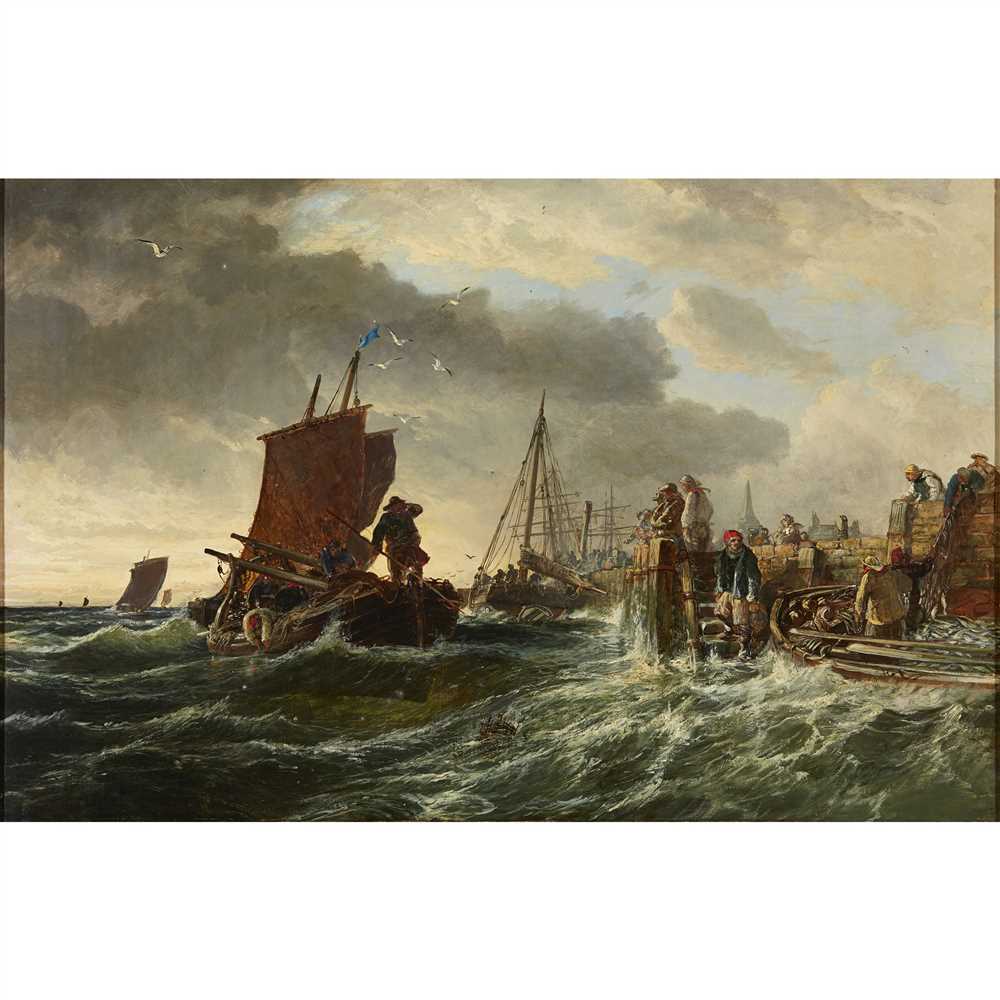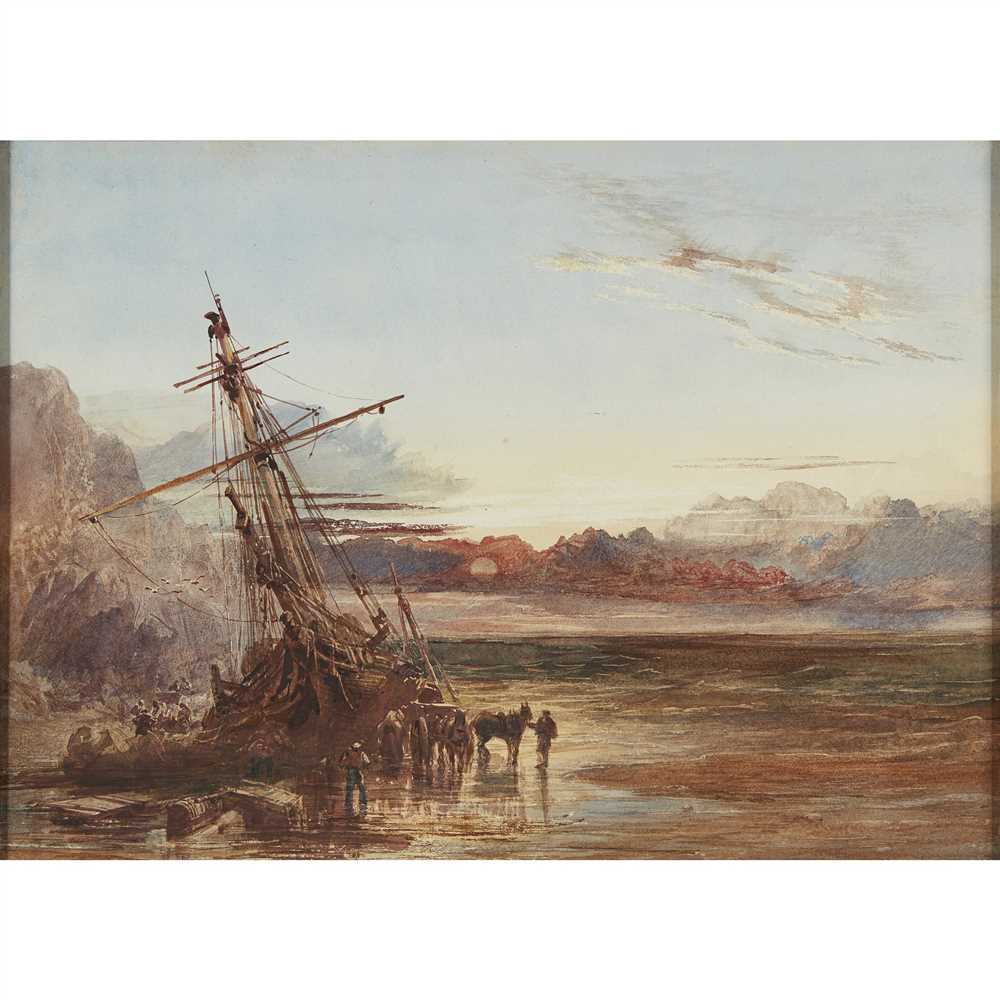(Scottish Paintings, 5th December 2019) § ANNE REDPATH O.B.E., R.S.A., A.R.A., L.L.D., R.O.I., R.B.A. (SCOTTISH 1895-1965) IN A CHURCH, ST. PAUL Signed, oil on canvas 51cm x 61cm (20in x 24in) Provenance: The Lefevre Gallery, London Portland Gallery, London Exhibited: Portland Gallery, Anne Redpath 2013, no.7 Note: Celebrated as one of the most important figures in 20th century Scottish painting, Anne Redpath became one of Edinburgh College of Art's most highly-commended students. After receiving a travelling scholarship in 1919, Redpath embarked on an extended period of study in Brussels, Bruges, Antwerp and Paris, where her work took on varied influences such as Rogier van der Weyden Duccio and Ambrogio Lorenzetti Redpath’s focus on early Italian art was not uncommon amongst her peers and her interest extended even further to Etruscan work. This interest is evident in her brushwork, especially throughout her earlier career, resembling that of fresco, albeit in oil. In October 1920, Redpath married architect James Beattie Michie and moved to France where she continued to paint, though much of her life became devoted to raising her three sons: Alastair, Lindsay and David. Painted during her time in France, Windmills at the Pas de Calais is a fine example of one of Redpath’s favourite subjects. The scene is bright, fresh and sunny; an Impressionist influence can be seen in her application of colour and texture. In contrast, Mediterranean Village is an example of Redpath’s later work. Deliberate splashes and scratches of white paint renders the scene more abstract, but no less beautiful. In In a Church, St. Paul, her brushwork becomes intricate, layered and focused in its application to reveal a symphony of detail, with Redpath utilising visible texture to emphasise the surface of the building itself. Redpath’s still life paintings are equally as exquisite; Still Life of Three Tomatoes utilises a flatter surface, exploring the dimensional aspect of her subjects, not with brushwork, but with colour. Dried Flowers, on the other hand, does both; here Redpath leans into a more abstract technique. The variation, talent and vibrancy of Redpath’s work is well demonstrated by the pieces presented in this December's auction. Redpath evolved beyond her influences to become an artist vital to the 20th century Scottish artistic tradition, and her work continues to be held in the highest esteem.
(Scottish Paintings, 5th December 2019) § ANNE REDPATH O.B.E., R.S.A., A.R.A., L.L.D., R.O.I., R.B.A. (SCOTTISH 1895-1965) IN A CHURCH, ST. PAUL Signed, oil on canvas 51cm x 61cm (20in x 24in) Provenance: The Lefevre Gallery, London Portland Gallery, London Exhibited: Portland Gallery, Anne Redpath 2013, no.7 Note: Celebrated as one of the most important figures in 20th century Scottish painting, Anne Redpath became one of Edinburgh College of Art's most highly-commended students. After receiving a travelling scholarship in 1919, Redpath embarked on an extended period of study in Brussels, Bruges, Antwerp and Paris, where her work took on varied influences such as Rogier van der Weyden Duccio and Ambrogio Lorenzetti Redpath’s focus on early Italian art was not uncommon amongst her peers and her interest extended even further to Etruscan work. This interest is evident in her brushwork, especially throughout her earlier career, resembling that of fresco, albeit in oil. In October 1920, Redpath married architect James Beattie Michie and moved to France where she continued to paint, though much of her life became devoted to raising her three sons: Alastair, Lindsay and David. Painted during her time in France, Windmills at the Pas de Calais is a fine example of one of Redpath’s favourite subjects. The scene is bright, fresh and sunny; an Impressionist influence can be seen in her application of colour and texture. In contrast, Mediterranean Village is an example of Redpath’s later work. Deliberate splashes and scratches of white paint renders the scene more abstract, but no less beautiful. In In a Church, St. Paul, her brushwork becomes intricate, layered and focused in its application to reveal a symphony of detail, with Redpath utilising visible texture to emphasise the surface of the building itself. Redpath’s still life paintings are equally as exquisite; Still Life of Three Tomatoes utilises a flatter surface, exploring the dimensional aspect of her subjects, not with brushwork, but with colour. Dried Flowers, on the other hand, does both; here Redpath leans into a more abstract technique. The variation, talent and vibrancy of Redpath’s work is well demonstrated by the pieces presented in this December's auction. Redpath evolved beyond her influences to become an artist vital to the 20th century Scottish artistic tradition, and her work continues to be held in the highest esteem.















Testen Sie LotSearch und seine Premium-Features 7 Tage - ohne Kosten!
Lassen Sie sich automatisch über neue Objekte in kommenden Auktionen benachrichtigen.
Suchauftrag anlegen